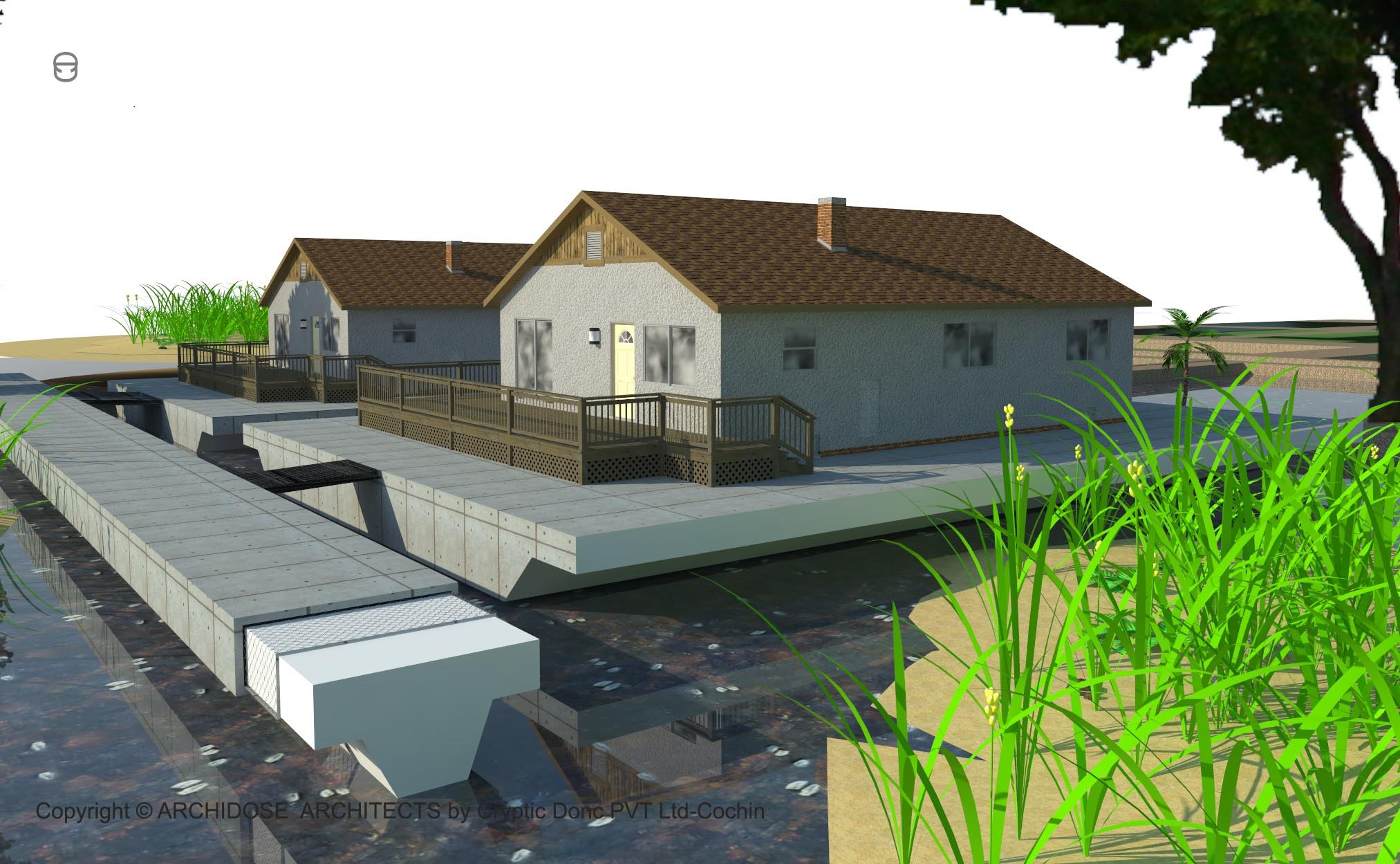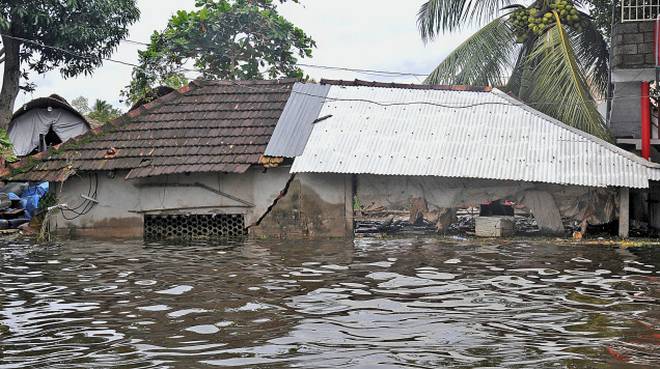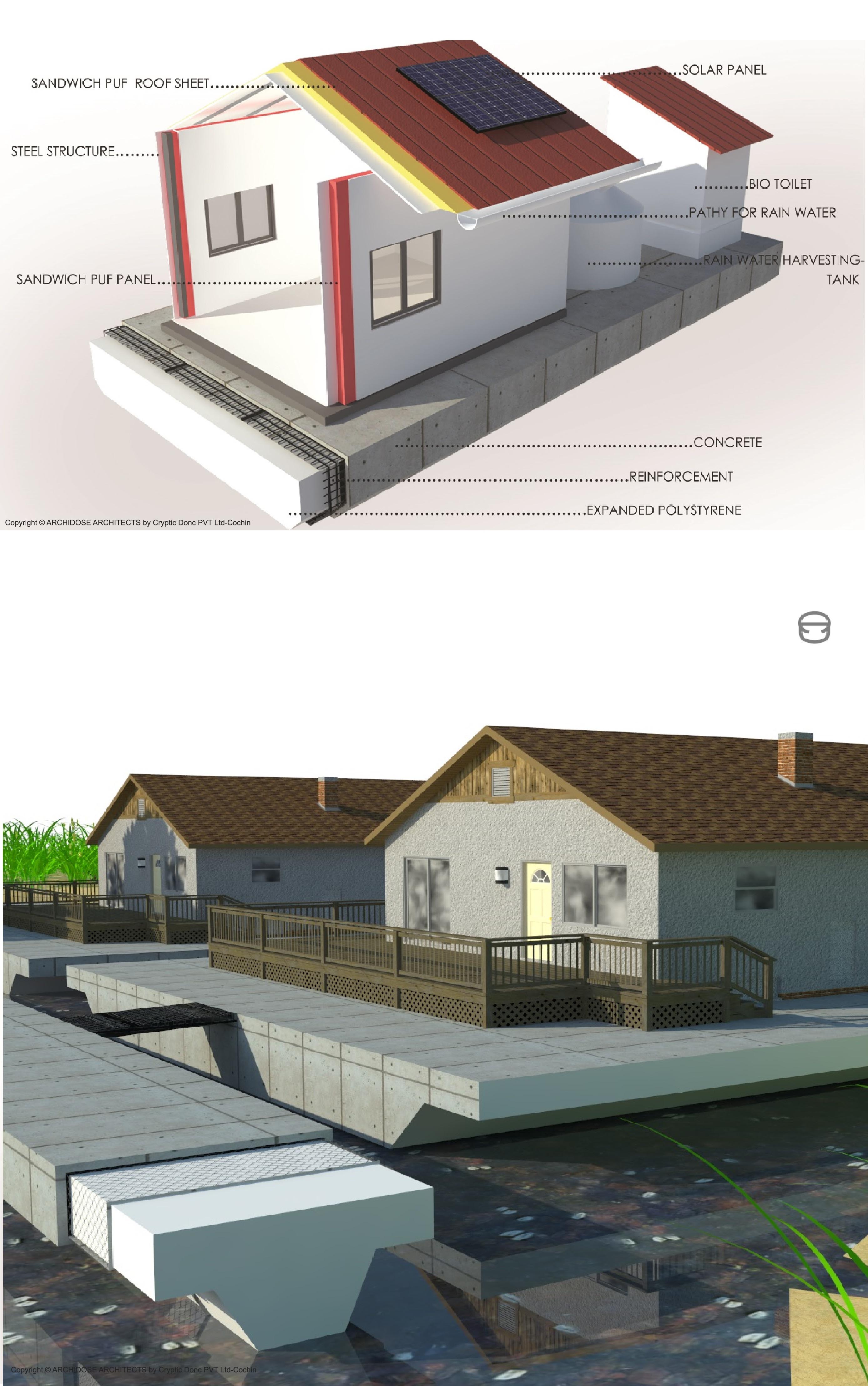|Amphibious Homes For Kerala|




Kuttanad is geographically unique, as it is one of the few places in the world where farming is carried out below sea level (1.0 to 3.0 meters). Through our experiences, we got to know that in kuttanad, massive concrete foundations and reclaimed land construction will not protect the building in a long run. And at the same time, it disturbs the natural flow of water, which in turn can be a reason to intensify the flood situation in such areas.
It is high time for us to change our views. Come forth into the light of things. Let nature be our teacher and lets work according to what she wants instead of changing it according to our needs. A solution to this problem is floating habitable structures. After researching about the various methods of building floating structures, its working, feasibility and cost, we have come to the solution of providing Concrete Polystyrene Basements..
Expanded Polystyrene is sandwiched between a layer of reinforced concrete to form a stable floating structure. This Reinforced concrete provides the structural strength and the enclosed polystyrene layer provides the buoyancy to the whole structure and thus allows it to float on water.
.
Polystyrene is an aromatic hydrocarbon polymer commonly known as thermocol. Produced by the polymerization of styrene. Which is having a closed cellular structure having high dimensional stability. It is chemically inert and does not react with most natural substances.
There are many materials that can be used to build floating homes. The key property of the material should be that it does not react with water when it is submerged and should have high buoyancy. Polystyrene is an apt material because of its high buoyancy and stable cellular structure, which does not allow it to soak water beyond four percent of total volume. So it can withstand even if water leaks through unforeseen gaps of concrete. It has a long life expectancy and least cost that makes this a preferable material. ."


We use Galvanized Steel instead of concrete beams and column, during floods, the building undergoes forces that can cause concrete to crack.Steel is good to handle these forces in a balanced floating structure.
PUF panels consist of a rigid core sandwiched between sheet metal structural boards. PUF insulated sandwich panels integrate joists and studs, insulation, vapour and air barriers. Easy to install and affordable.Improved thermal and acoustic insulation, Lifetime durability and high load bearing capacity.Used as Structural Insulation Panel (SIP) eliminating the need of masonry.Resistant to corrosion, termites, physical impact and fungus
Sloping roof is apt for our tropical climate, avoid leakage due to rain, easy to harvest rainwater, sloping roof reflects sunlight and reduces temperature, also good to place solar panel.
In order to build a stable floating structure, we need to balance all load barring according to Archimedes principle. For that, we need fix all furniture, kitchen slabs and storage accordingly.
There should be a chance of getting these places isolated so we need to provide some minimum amenities for survival like rainwater harvesting unit, solar panel and biotoilet.
During flood, there is a chance for drinking water scarcity, for their survival we should provide a rainwater harvesting unit.
Like water, a toilet is also an important thing. During flood times ordinary toilet tanks will be filled with water and become unusable. provide a bio-toilet along with the floating structure.
We need to provide at least a unit of solar panels to light up at night and charge their cell phones.
The structures can undergo small displacement even if it's tied. Multiple units will hold these structures together like a network and avoid displacement.
Media

The research is a continuous process and we welcome people from all fields to contribute their thoughts on this. We are also looking for Government and Private bodies that can promote this idea.
For More Info Contact +918129225069
.